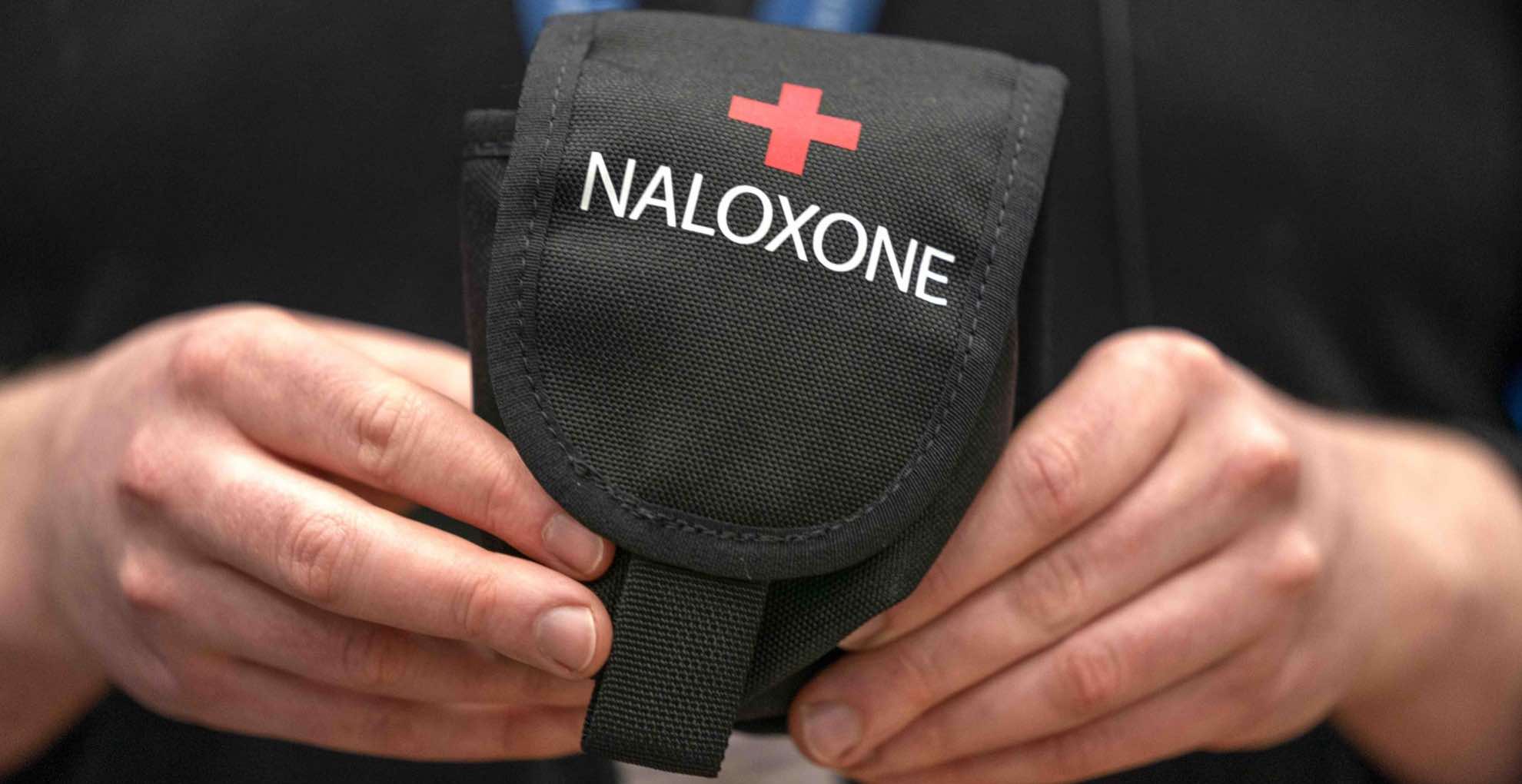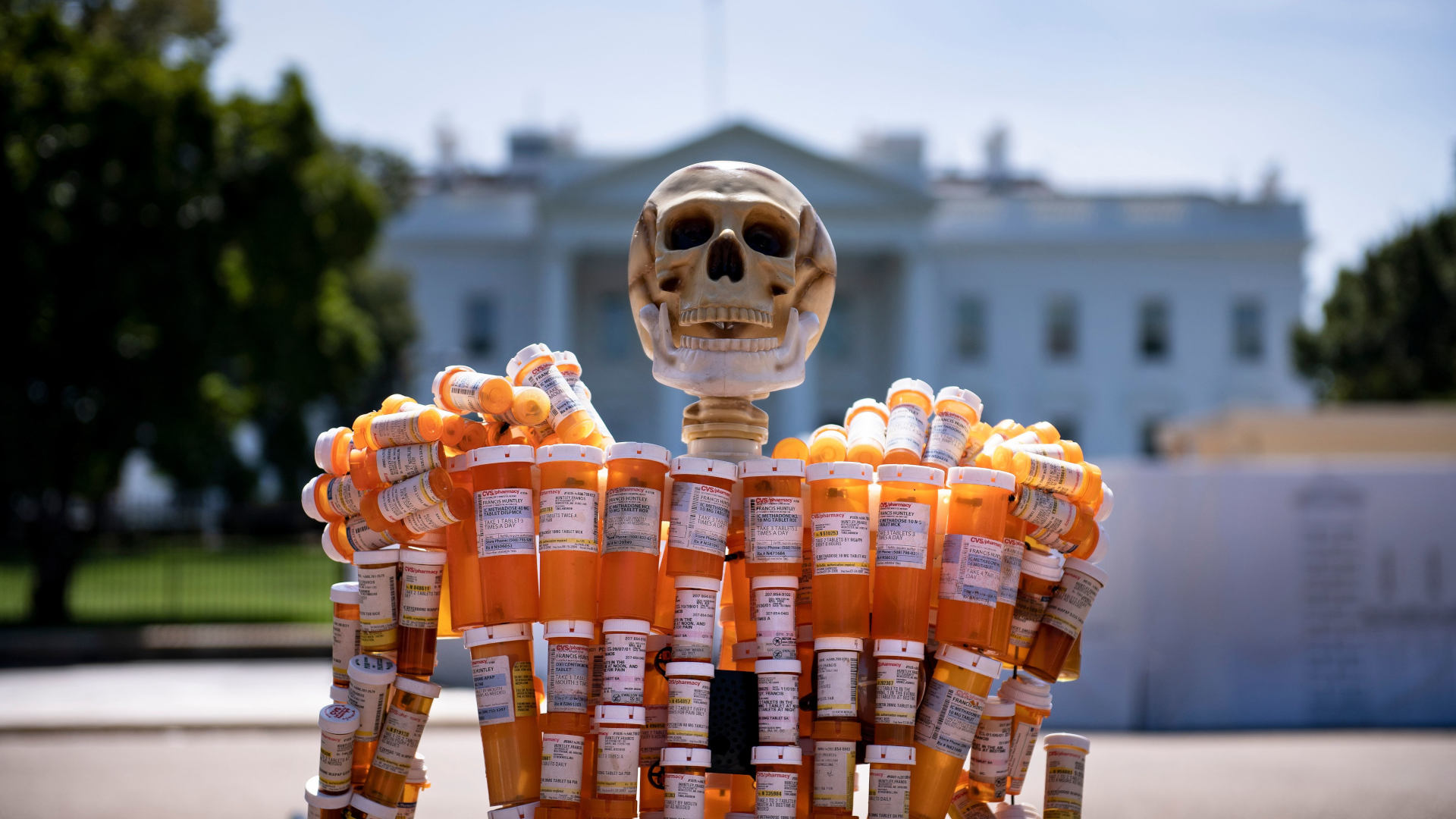In the U.S., A New Approach to Counting Overdoses
In his six years working on the streets of El Paso, Texas, Chris Bailey has spent countless hours handing out the overdose-reversing medicine naloxone. In his capacity as project coordinator with Project Vida — a local health clinic and street outreach organization — he also aids community members living with addiction.
But these efforts are hobbled by a lack of hard, fast data on overdoses, Bailey told Undark in a recent interview. Exactly where overdoses occur in El Paso can vary from week to week, due to an unpredictable drug supply, the removal of homeless camps, and more. “Contact can be difficult,” he said. “Tracing those individuals can be difficult.”
Accessing overdose data is particularly tricky in Texas, although a dearth of timely and complete numbers is also a problem in many other states. Often, the data isn’t updated in real time, nor does it include non-fatal overdoses. There may also be inconsistencies in how the deaths are reported. To change that, researchers across the United States have been setting up new digital platforms with reports from people who use drugs, medical examiners, and others. While these platforms may lack the rigor of official government numbers, the academics say the new data could tell Project Vida and programs like it where to focus efforts — and, they argue, could save lives.
In 2021, Project Vida began piloting one of these platforms, an effort out of the University of Texas at Austin called TxCOPE. In short, the platform, which is anticipated to launch in September, has a dashboard for harm reduction groups, first responders, people who use drugs, and other community members to report overdoses — fatal or otherwise. Until then, the pilot organizations can still report and view data through the website.
According to Kasey Claborn, a University of Texas at Austin psychologist and the principal investigator with TxCOPE, faster data allows harm reduction organizations to be more responsive when overdoses spike in different parts of the city.
This may save time and money. Though President Joe Biden announced $30 million in grants to support harm reduction efforts in early 2022, most harm reduction organizations operate with limited resources, Claborn said. For instance, the Houston Harm Reduction Alliance runs on less than $50,000 per year. These groups are often on the front lines of the overdose crisis, which — spurred on by potent synthetic opioids like fentanyl — in the U.S. in 2021 caused 107,000 deaths.
According to Claborn, TxCOPE allows harm reduction workers, first-responders, and people who use drugs to have a real-time picture of the overdose crisis in their communities: “They can actually make data-driven decisions to support their prevention and outreach efforts.”
The problems with overdose data vary across jurisdictions. In many states, including Michigan, the gold standard for identifying overdose-related deaths comes from death certificates, according to Jeffrey Duncan, Michigan’s registrar and director with the Division for Vital Records and Health Statistics.
The death certificates are primarily recorded by medical examiners or coroners. If the death appears to be from anything other than natural causes, the certifier may send a blood sample for a toxicology report and mark the cause as pending. When the toxicology screen comes back, they can update the certificate. This information also goes to the Centers for Disease Control and Prevention’s National Center for Health Statistics for use in federal statistics.
But the process is slow. According to Duncan, it can take two to three months for a toxicology report to return to the certifier. Rita Seith, a manager with the opioids and emerging drugs unit at Michigan’s Department of Health and Human Services, said there is a five-month lag when the state releases provisional data about the overdose deaths. The state also reports year-end data, including the confirmed deaths. Meanwhile, the CDC reports provisional data on overdose deaths monthly, with a four-month lag time. The CDC also offers yearly overdose death reporting, though it has other reporting mechanisms as well, according to an email from Courtney Lenard, a CDC spokesperson.
Texas reports overdose deaths differently, although the details are murky. According to an email from the Department of State Health Services, or DSHS, Texas can generate a report on deaths, including overdose deaths, “at any time.” However, the email also states that the data on the Texas Health Data dashboard is updated annually. (A representative did not respond to Undark’s requests for clarification.)
The email from the DSHS did confirm that Texas doesn’t report non-fatal overdoses. By contrast, Michigan makes use of three different emergency department data sources and EMS data to collect and report on these non-fatal overdoses. And the CDC’s Drug Overdose Surveillance and Epidemiology system, or DOSE, collects data from most states, but some, like Texas, are not currently participating.
Most of the official data on non-fatal overdoses comes from hospitals or first responders, but not every non-fatal overdose happens in a formal setting. People who use drugs — particularly those in marginalized groups — may avoid calling an ambulance to reverse an overdose for fear of stigmatization. TxCOPE’s data may fill these gaps. “This actually will allow us to see more equitable data than what is currently available to the state,” Claborn said.
Much like government reporting, a new platform called the Michigan System for Opioid Overdose Surveillance, or SOS, makes use of suspected fatal overdose data from medical examiners in the state. But it also takes in suspected non-fatal overdose numbers provided by the EMS in Michigan. Using EMS statistics on naloxone administrations as a proxy for non-fatal overdoses isn’t perfect, Seith said. Hospital staff could inject a person with the overdose reversal drug and later find out that they were suffering from something unrelated.
An overdose would appear in the SOS database within just 24 hours, according to Jason Goldstick, a public health statistician at the University of Michigan. SOS launched in 2019 and had around 450 users as of 2021, he said, including community outreach workers, quick response teams, and healthcare organizations. Vetted groups that use the data have access to a map that shows roughly where cases happen, while the general public can view the numbers by county. (Names and other personal information aren’t included.)
The data aren’t as accurate as year-end CDC numbers. The overdose deaths reported by the medical examiners’ offices, for instance, are still only suspected cases. Later on, they may receive a negative toxicology screen, Goldstick said. But the intention is to report data as close to real time as possible, so that groups handing out naloxone and performing other community-level functions know where to spend their time. A year-end report, he added, “isn’t going to tell you where to focus now.
Beyond being slow, numbers from death certificates can also paint an incomplete picture of the situation due to differing levels of training and education. These can vary from state to state and even certifier to certifier. Each state determines its own standards for what kinds of deaths require further investigation, though the National Association of Medical Examiners provides some recommendations about how to investigate, diagnose, and certify overdose deaths.
One key difference lies at the state level. Michigan, for instance, only uses medical examiners to determine causes of death; Pennsylvania makes use of both medical examiners and coroners. (The former position is always a medical doctor, while the latter does not require a medical degree.) Each state also has its own training standards for coroners, and in some states, like Colorado, coroners are elected.
Texas makes use of medical examiners, but in many of its 254 counties, justices of the peace fill that role. Claborn said there are 15 medical examiners for all of Texas. DSHS did not confirm this in its email to Undark, although it was accurate as of 2019, according to the Texas Medical Association, and is supported by a DSHS document. For comparison, Michigan has 83 counties and more than 30 medical examiner officers, many of whom cover several counties, Duncan said.
Justices of the peace don’t have the same medical training as medical examiners, Claborn said. They can send blood samples to another county for toxicology reports if they suspect an overdose. But, justices of the peace may decide against it due to the cost (potentially $2,500 plus transportation fees), according to a paper outlining the creation of TxCOPE.
There are also inconsistencies in states that rely mostly on medical examiners. While medical examiners are all doctors, they are not all are forensic pathologists — a medical profession that focuses on, and receives additional training in, deciphering causes of death. By some counts, there are only 500 full-time, trained, and board-certified forensic pathologists in the U.S.
There are also significant differences in training and experience among medical examiners, according to Michael Freeman, a professor of forensic medicine at Maastricht University, who wrote a paper about a platform akin to TxCOPE in Pennsylvania called OverdoseFreePA. These differences may lead to undercounts of overdose deaths, Claborn said. Such platforms won’t directly solve these issues, she added, but the data gathered from the community could expose gaps in official reporting.
Some efforts at the federal level may also improve overdose reporting. One of the National Institute on Drug Abuse, or NIDA’s, research priorities, for instance, is looking for new technologies to aid the process. The CDC offers guides and web-based training for coroners and medical examiners to investigate overdose deaths. In 2019, the agency also launched Overdose Data to Action to provide timely fatal and non-fatal overdose data.
Another government-affiliated effort launched in 2017, as part of the Washington/Baltimore High Intensity Drug Trafficking Area, or W/B HIDTA, program, itself part of a broader effort created by the U.S. Congress. The project, called the Overdose Detection Mapping Application Program, or ODMAP, takes in reports from police officers, healthcare workers, coroners, medical examiners, and other groups. Currently, more than 4,000 agencies across the U.S. participate, according to Jeff Beeson, deputy director and chief of staff for the W/B HIDTA program.
ODMAP data can be accessed by public, and potentially private, entities that deal with public health and safety. According to Beeson, the platform was designed to be expedient, but like other quick turnaround sources of overdose data, its entries include cases that haven’t been backed up by toxicology reports. “We want to save as many lives as possible in as near real time as possible,” he said.
Emily Einstein, chief of the science policy branch of NIDA, said that her organization is unlikely to use data gathered from any of the digital platforms, and that it would opt for CDC numbers instead. However, she noted that finding robust and fine-grained data is a “high-priority issue” for NIDA, and acknowledged the issues in speed, non-fatal overdoses, and certifier consistency. However, Einstein added, for harm reduction groups, these platforms could be great sources of data, particularly considering people who use drugs may be more comfortable engaging with the organizations than government agencies.
“Capturing overdose data from as many sources as possible is ultimately going to lead to more accurate estimates,” she said.
In Texas, Bailey said that Project Vida can also look forward to more data once TxCOPE has been launched in full, and members of the community begin using it. But the platform has already made a difference. By giving the group a quick image of overdoses in El Paso, the application has helped the organization refocus their efforts. Staff members know which neighborhoods and streets have high rates of overdoses, so they can work to establish trust in those communities. From there, they hand out naloxone and train community members and people who use drugs on its use.
According to Bailey, many of Project Vita’s clients have overdosed on opioids between five and eight times in a year. However, TxCOPE’s data increases the odds that naloxone will be on hand when these overdoses occur. The platform could also help the group connect clients with other valuable services like methadone programs.
In order to make that connection, he added, “it’s just a matter of keeping them breathing long enough.”











